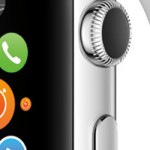The argument that Apple has failed to give a compelling “use case” for its Watch is a bit misguided.
The first iPhone was sold as your phone and iPod in one – which wasn’t a unique proposition in itself – but that mild convenience was hardly enough to justify its massive cost.
And when Steve Jobs debuted the iPad, he sold it as the perfect device for consumption – completely failing to anticipate its success as a creative, organisational and business tool.
In reality, Apple is not in the habit of making use cases for its products, beyond assuring prospective consumers that they are objects of desire.
Josh Dzieza in The Verge has even suggested that – in the case of the Watch at least – this is because the real use case undermines the role of Apple’s golden goose. But the truth is far more simple.
Apple has not given a strong use case for the Watch because one does not exist yet – but it’s confident one will soon.
A little bit of magic
Read this fantastic piece in Wired and you might begin to see how a wearable could play a part in someone’s day-to-day life. It details Disney’s $1bn development of the ‘MagicBand’, a relatively simple wrist-strap that houses a huge amount of potential for the company’s theme parks.
After a bit of planning on the accompanying app/website, visitors can use the bands to get access to their room, fast entry to rides of their choice and quick (and automatic) service at restaurants.
Customers can also link the band to a credit card, so it can be used to make purchases while in the theme park’s shops – while in the future Disney could even use the bands to locate specific guests and bring “experiences” to them.
By building the Watch, Apple is creating a similar system, only it’s designed for the wider world and it will be utilised by companies that can’t afford to spend ~$1bn developing their own.
If you think of the Watch being combined with Apple’s iBeacon – a low-powered device that can detect and perform certain actions with nearby iOS devices – you suddenly start to see its true potential.
For example, someone might enter a shop and – seeing where they are – the Watch might pull up the relevant shopping list for that location. The store’s app might notify the user of certain special offers available in store at that time, while the Apple Pay screen might automatically pop up once the user makes their way to the till.
Of course it doesn’t have to be all about the buyer/seller relationship – this kind of technology could be used to help tourists navigate a city, give the right people access to the right buildings/rooms and even allow for better planning based on the data flow generated.
If wearables become a mainstream hit – and that’s still a big ‘if’ – firms will to tap into them through inexpensive apps and create new, interesting ways for people to use them.
In other words, they’ll be the ones – not Apple – to develop the technology’s “use case”.
